The fiery miles of the legendary Kursk
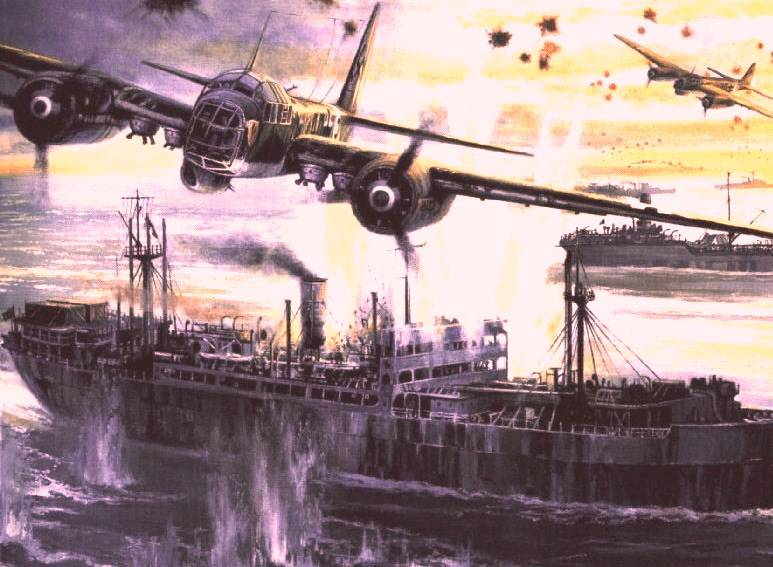
From the first days of the war, the court of the Soviet Sea fleet participated in military operations. They dealt with the tasks of supplying troops with military equipment, food, fuel, took out wounded and civilians, equipment of enterprises, landed marines, worked as floating hospitals, etc. The crew of the Kursk steamboat heroically operating during the war contributed to the Victory approximation.
In the late thirties many sailors knew about the Kursk. In 1911, he was lowered from the stocks of the English shipyard in Newcastle. For those times - large: load capacity 8720 tons and power of 3220 engines. with. It was built on money collected by residents of the Kursk province, hence the name. He was a member of the Voluntary Fleet. He participated in the First World War and even hit a mine. In 1916-m almost drowned in Arkhangelsk - was damaged as a result of sabotage. After the October Revolution, being far from the shores of the Motherland, he was captured by the interventionists and taken to England. However, the efforts of the Soviet government returned to their homeland and first included in the register of the Leningrad port, and then transferred to the Black Sea Shipping Company and put on the Odessa-Vladivostok line.
The crew of this ship earlier than other Soviet people, faced with the Nazis. In September 1936, the Kursk under the command of Captain V.E. Zilke was sent to the ports of fighting Spain. He was supposed to deliver Soviet pilots and barrels with aviation combustible. An unarmed steamer was bombed in the port of Alicante. However, air bombs were avoided. The German destroyer blocked the further route to Barcelona on the Soviet ship. The situation was extremely dangerous, but the captain found a way out. When dusk came down, the Kursk, with full ship lights, headed for the open sea, north to the Balearic Islands. Retreating a few miles, the crew began to gradually turn off the lights, depicting the care of the horizon. When the lights were extinguished, the ship abruptly changed its course to the south, and the fascist destroyer, misled, met the Spanish cruiser with artillery fire, mistaking it in the dark for a Soviet ship. The employees of our embassy in Barcelona, when they saw the ship, were surprised and delighted, because the Franco radio had already reported about the sinking of the Kursk. The return home, despite the dangers in danger, also went well. Until 1941, Kursk worked on the Poti-Mariupol ore-coal line. And with the beginning of the war, he joined the front-line transportation.
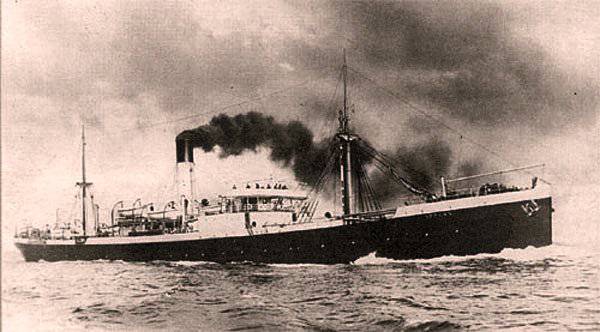
The second meeting of the ship with the Nazis took place in the port of Odessa 22 July 1941 year. At that moment there were more than seven hundred Soviet soldiers aboard the Kursk, over 380 horses, 62 vehicles, 10 vehicles, about 750 tons of ammunition and other goods. The vessel entered the burning port and, having given up the anchor in the inner raid, began to expect mooring and unloading. Barely dawn came, as German bombers appeared over Odessa, dropping their deadly bombs on the city and port. Two of them exploded at the stern of the Kursk. The shards and the blast wave destroyed the residential and service premises of the vessel. There were shouts and moans of the wounded. In the formed hole gushed water, which began to fill the hold. At the command of captain V.Ya. Truta crew rushed to seal the hole, which quickly managed to eliminate. This time the ship received 180 holes in its sides. Soon, four 45-millimeter anti-aircraft guns and several machine guns were installed on the Kursk.
In September, when the Kursk was flying from Novorossiysk to Odessa, he was attacked by three German bomber. They dropped bombs on the 12 steamer. But, skillfully maneuvering, the Kursk managed to evade them. After hours 6 raid repeated. Enemy aircraft were met by organized fire from cannons and machine guns. One of the bombers soared steeply upwards, leaving behind a black plume of soot and smoke, began to fall heavily, breaking apart in the air. The rest of the planes flew away. The Kursk brought soldiers and commanders, weapons and ammunition to Odessa near 5000.
9 flights to this besieged city made Kursk under the command of captain V. Truth, and it was becoming more and more difficult to get there every day. Taking advantage of a temporary air superiority, enemy aircraft continuously bombed and fired upon our ships, the sea was boiling with thousands of mines, but Soviet ships continued their hard work.
On October 6, the ship was finishing loading and preparing for a flight to Odessa, and along the way, about a thousand Red Armymen had to be thrown into Feodosia. In Odessa, the Kursk was moored from the outside of the Platonov mall under 8-ton cranes. The sky was hazy. Burning northern warehouses, warehouses on the coastal quay, separate houses. Soot flakes flew in the air. The outskirts lit up crimson lights. In the port, a mass of transports, artillery, vehicles, ammunition, foodstuffs flowed. Clear - evacuation. People are almost invisible. Fighters on the lines of defense, they will be taken on board at the last moment. By the way, the Nazis did not know until the next morning that our troops had left positions.
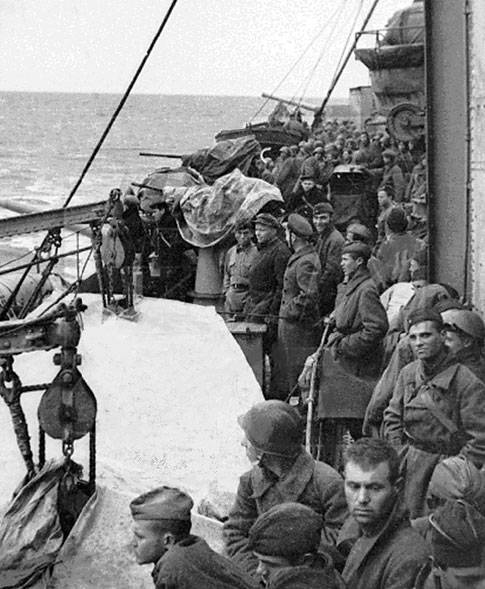
At night, 3000, dusty, in bandages, burned overcoats and jackets of the Red Army and Navy men, were taken to the steamer. However, everyone was in a fighting mood: we were leaving, but we would definitely return. Having loaded, the transports in escort ships alternately left the port. The picture, according to the memories of the sailors, was ominous. On kudlatnyh clouds the reflections of fires, a continuous veil of black smoke. Beach in the red glow. Horses are running around the streets - ordered to shoot them, but who will raise a hand? Our caravan stretched for a dozen miles: 17 ships and ships of the convoy led by the cruiser "Chervona Ukraine". Route Tendra-Ak-Mosque-Sevastopol.
With the first rays of the sun, “Junkers” appeared and the satanic whistle began. Engines roared, bombs crashed, fragments buzzed, anti-aircraft guns slammed and machine guns cracked. White cones of explosions billowed, the sky was littered with pompons of shrapnel. Fiery trails stretched towards the dive bombers. The fascists managed to sink only a small transport "Bolshevik", its crew were removed by hunting boats.
Sevastopol met the caravan of ships anxiously. Above the coves of clouds of dust, ash and clouds of smoke. From the Mekenziy Mountains comes the cannonade. The city, previously sunny and cheerful, became stern, like a man who changed civilian clothes for a military uniform. After unloading, the Kursk moored at the Engineer Pier to fill the holds with industrial equipment for shipment to Sukhumi. In daylight, anti-aircraft guns and fighters drove the fascists away. At nightfall, the city was bombed and mines were dropped.
When the ship arrived in Sukhumi, the sailors were a bit dumbfounded, as if they had got into the pre-war time. The bazaar was full of fruits and vegetables, fragrant with aromas. Worked shops, cinemas, clubs and dance floors. Yes, and blackout, we can say partial. The crew was given a little rest and the Kursk began on shuttle flights: Novorossiysk (Tuapse) - Sevastopol. There - the troops and equipment, back - the wounded and evacuees.
Low-speed vessels could not cover the distance from the rear bases to the besieged city in one night, and in the afternoon enemy aircraft raged. Cover from the air was not. Thought out the original route. Transports accompanied by a minesweeper or a hunter boat follow from the Caucasus to the Turkish coast, then along Anatolia, without entering the territorial waters, to the meridian of Sevastopol. Then turned to the north, with the expectation to enter the bay at dawn. Often in such a roundabout way and walked.
With the approach of winter there were serious difficulties in the supply of coal. Donets Basin captured by the enemy, registered every kilogram of fuel. In Novorossiysk, the ship zabunkurovalos anthracite shtyb, which was more rock than coal. No tricks were allowed to raise steam. The ship was barely moving, although the stokers were climbing out of their skin. And here the foreman Jacob Kior proposed to water this “ground” with oil. They hanged a barrel on the talles, gave a thin stream of fuel, and went merry. The weather has come - a sheer disgrace: squally wind with snow, a wave above the board. If it does not blow out, then the dead swell lays from board to board to gunwale. Especially getting to the small security ships. Only they signaled: "Turn off the course, the blows of the waves destroy the ship, the crew exhaust itself completely." Coming to Sevastopol, the ships immediately took aboard sailors and sea hunters. Emaciated and exhausted, refusing to eat, they fell on the berths of the sailors and fell asleep. And so day after day, night after night, through storms, fire and death ...
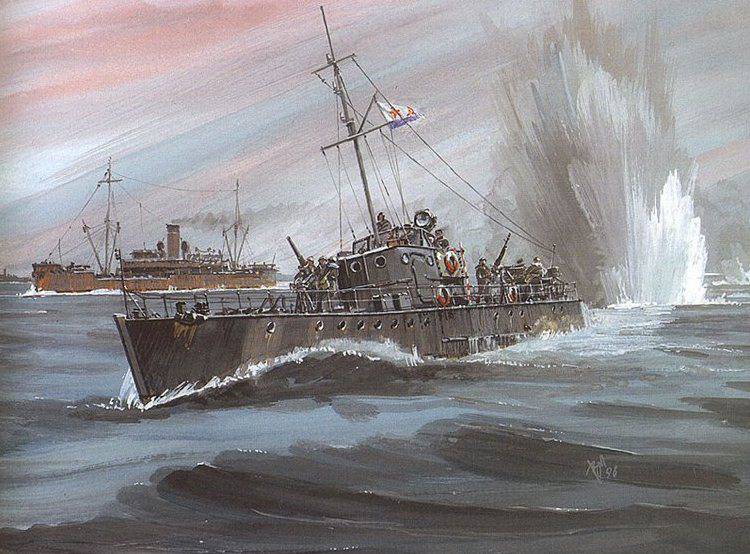
At the beginning of December, the Kursk was loaded again in Tuapse, and 23 came up to Sevastopol in the morning. The sky was clouded with smoke, the front line was noticeably closer to the North side, even without binoculars it was clearly visible how the “silt” ironed enemy trenches and trenches. It became more difficult to get on the internal raid - long-range artillery was added to the mines and aviation. The steamer lay down on the Inkerman alignments, and immediately splashes of enemy shells arose around it. Splinters flooded the hull and superstructures. Maneuvering between the gaps, the Kursk entered the bay. Quickly got up for unloading to go back at night ...
The “invincible” German army under Moscow received such a rebuff that it rolled back hundreds of kilometers from the capital. This affected the mood of the sailors. Fatigue went into the background, the crew began to receive fighters and equipment for the Kerch-Feodosiya landing operation with enthusiasm. It is to be implemented in three echelons. "Kursk" in the third.
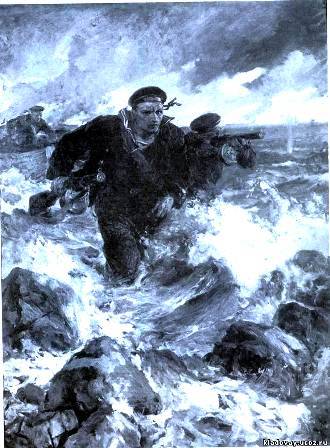
When the landing began, the weather was worse than you can imagine. Violent storm raised a steep wave. Lead mist around. Flying twelve point wind. It was the Soviet transports on hand, but the connection between the courts was bad. The shore bristled with steel needles. The ship Penai was hit, the ship Kuban was killed. Around midnight, "Kursk", finally, in the port. Severe icing prevented the landing. The paratroopers jumped straight into the icy water and quickly went to Bald Mountain, completely covered in smoke and flashes of explosions. There was a crash of cannonade and firing in the air.
Several angry women, cursing at what the world is worth, dragged some dark-haired man by the collar of her coat to the gangway. They were stopped by the commissioner of the regiment brought in by the Kursk. It turned out that the women detained the traitor, who had betrayed many of our Gestapo men. When he found the documents confirming his vile affairs. The traitor was shot on the pier. With the dawn, "Junkers" flew. The crew opened fire. It was already cold, but the tools for the winter lubrication had not yet been translated. Flywheels stuck, which greatly complicated the guidance. The second mechanic of Kursk A. Sledzyuk, who was in the calculation of anti-aircraft guns, recalls this as follows: “I twist the knobs, trying to catch the silhouette of the aircraft in the crosshairs. Sweat on the eyes, hands stiffen from tension. I see how the bombs stick at the side of the nearby "Red Guard" standing nearby. The steamer sinks its nose into the water and disappears in clouds of steam. Nearby "Dimitrov" is ablaze. At the pier, the wing of the bridge was demolished. Shooting, the ship goes to the raid. Until dinner itself, the attacks follow incessantly. At noon I go downstairs, take the watch, barely standing on my feet. In the engine room bombing is transferred worse. Upstairs, one goal is to repel the enemy, forgetting fear. Here is another. Boilers roar. Overhead clatter winches. Heat and chad. You throws from the bulkhead to the bulkhead. What is out there is unknown. According to the signals from the bridge, the alternations of “forward”, “backward”, “stop”, I guess - they began to withdraw. Instead of a first-class driver, I have a thirteen-year-old boy, Tolya Yasyr, our “son of a ship,” who came from a military unit when she was thrown into position. Together with him we carry out commands to change the course. Suddenly, an enormous power explosion presses Toll to me. The ship throws up, the hull shakes from a huge hydrodynamic impact, the car freezes. We look around - there are no especially serious damages, minor ones are eliminated. ”
After the release of the Kursk, another strong explosion thundered on the raid. This time the situation was worse: the propeller nut surrendered, a knock began in the cylinder of the wet-air pump. The steamer had to go at a slow speed. Slowly, constantly fighting off the dive bombers, the ship docked to Novorossiysk. There mechanics on their own made the necessary repairs.
It was hard and dangerous to swim: mines, bombings, shelling, lack of navigation, blizzards and storms. And then, in February, the ice shackled the strait and the Kamysh-Burun raid. Discharged accounted for fast ice. Sometimes when unloading, guns and shell boxes fell through the ice. And then the team of cats caught them to the surface. At the crossings to the attacking Soviet ships, torpedo bombers joined the diving bombers. Soon their victim was the ship “Fabricius”. In such difficult and dangerous campaigns, winter and spring passed, summer came. In June, Kursk was ordered to deliver a cargo of manganese ore from Poti to Novorossiysk for shipment to the Urals. On the beam of Pitsunda, the steamer was attacked by 10 torpedo bombers, who dropped 12 torpedoes. The team could clearly see how they were detached from the plane, with a chilling howl, flying parallel to the water and flopping into the sea — a white foamy arrow of the track. The ship could only manipulate the moves, toss, avoiding deadly cigars. Two torpedoes, emerged and sank again, like dolphins — obviously went cold — nearly struck the sides of the Kursk. Soviet ship lucky again. He safely reached the port and got up for unloading.
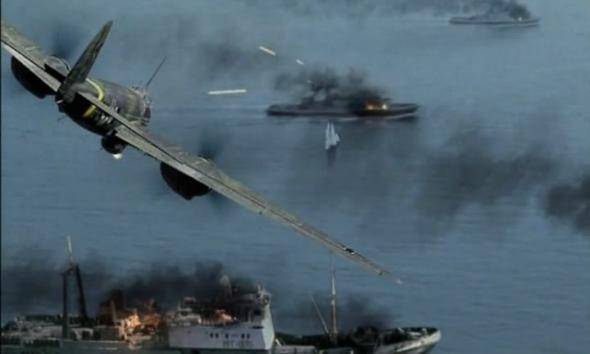
15 July Soviet troops left Sevastopol. Many sailors barely restrained, and sometimes they did not restrain tears. In August, the Kursk was in Novorossiysk. The city was bombed and fired from guns. There was a lot of destruction and fires. Clouds hung cement dust. The earth shook from the explosions. It seemed to the sailors that they had been forgotten; there were no instructions. The third mechanic, Koval, announced to the motorists: "If they come closer, we will undermine the ship and go to the mountains, we will become a partisan." In the evening, children from the Krasnodar orphanage arrived on board. From such a load, sailors already thrown into the sweat. The holy cause to deliver all safe and sound. At night, the ship came out on Tuapse. With the rising of the sky, the Junkers reappeared. The crew took the usual places with guns and machine guns. Pompolit reassured kids. Yes, they did not cry, sat with serious muzzles. Having repulsed numerous air attacks, the Kursk reached its destination. Later it became known that “A. Serov "nearly drowned, all stuck in the holes in the shoals. The crew imitated a fire set on fire by a solarium and smoke bombs. Planes flew away. The vessel was removed from the shoals and literally on an honest word crawled to Poti.
And the Kursk was covered in holes, patched and rolled, and went for repairs in Batumi. At the factory, we tried and accelerated repair work as much as possible. Kursk is back in work. He was instructed to transfer a mountain division from Poti to Tuapse. Having taken on board the soldiers, 440 horses and 500 tons of equipment, the ship went into flight. The troop command clearly organized observation and defense. The barrels of anti-tank guns and muzzles of machine guns stared at the sky. In New Gagra, the five "Junkers" jumped out of the clouds. They were met with such friendly fire that, scattering bombs around, they hurried to retreat. Two hours later, the attack again. Several aircraft broke through to the ship. Bombs fell down. Large bombs fell against the engine room and the fourth hold. The deck was flooded with blood. Ship physicians Fanja Chernaya, Taya Soroka and Nadya Bystrov provided first aid, the doctor Nazar Ivanovich unfolded the operating room. The explosion struck the side, the fragments cut the steam line feeding all auxiliary mechanisms. The premises were filled with steam, the car began to fail. The crew shut off the valve and proceeded to clean the fireboxes. It was necessary to strip the insulation and get to the tubes. With great difficulty, managed to eliminate the damage. But the ship reached Tuapse and landed the fighters.
As soon as the Kursk moored in Tuapse, a boat jumped to its board, giving the command “Shoot off immediately! Large aviation compound expected! You can be covered in the fairway! ”In minutes, the ends were lost, and the tugboat pulled the ship to the exit. Not far away, a minesweeper raised a signal: “Kursk”, 30 “Junkers” are escorting you, accompanied by 16 “Messerschmitts,” get ready! ”As soon as the ship reached the gate, planes attacked it from all directions. A hail of bombs and machine gun bursts overwhelmed by heavy rain. Water raged, bursts did not have time to fall. Fragments and bullets thundered on the casing. One by one, dead men from gun crews fell dead. Many were injured, but continued to fire. The captain, maneuvering, evaded attacks. In the car and the stoker there was hell. The flooring beneath their feet was shaking, and clouds of coal dust hung in the air. And suddenly the ship shook so powerful a blow that many flew head over heels. A direct hit was destroyed servants guns. Above, a fire flared up, and the lights went out in the engine room, but the engines continued to work. The raid was reflected, but the victory was expensive. Killed about 50 people. There were many wounded. The vessel has lost its reverse gear - the screw nut has departed even more. This battle of Kursk with dozens of bombers was written in the newspapers. About him learned the whole country.
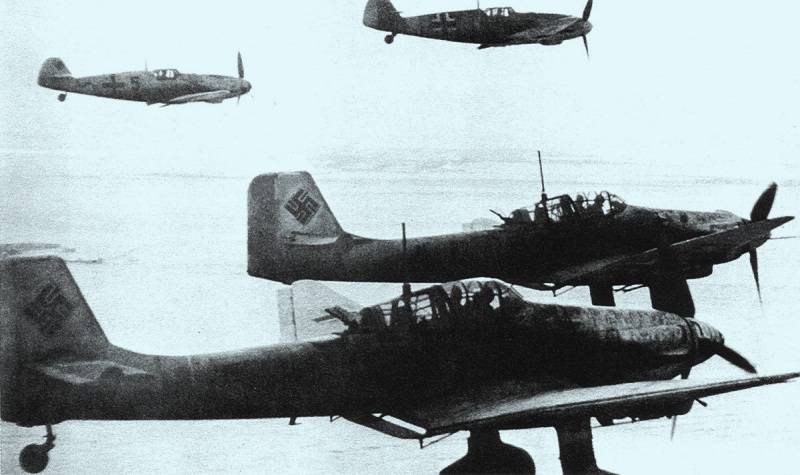
With coal it became very bad. There was no. Decided to convert the boiler to fuel oil. All work was carried out by the ship crew. It was possible to finish the work ahead of schedule, and the ship again entered the voyage. In February, 1943, a bold assault in the Stanichka area was carried out to disrupt the enemy’s plans. The fighters entrenched on the Myskhako peninsula, which later became known as the Small Earth. The Kursk under fierce fire made five flights there, delivering soldiers and sailors and almost 5500 tons of cargo to 1400. The Soviet offensive continued. In September, Novorossiysk, Mariupol, and Osipenko were released. Then the Taman peninsula was completely cleared from the enemy. The battle for the Caucasus ended in victory. 10 April Soviet troops entered Odessa. "Kursk", who left her last, returned one of the first.
Blooming Odessa was ruined. On the site of the ship repair plant, refrigerator, elevator and warehouses were now burnt piles of bricks. Almost all breakwaters and moorings were blown up, power stations and a water supply system were put out of operation. Destroyed many buildings and monuments. Hard, but people started to rebuild the city. A "Kursk" again went hiking. Began flights to Romania and Bulgaria. The news of the victory found the ship in the sea. There was no limit to the joy of the crew, who, from the first to the closing hour of the most brutal and bloody war, not sparing himself, fulfilled his duty to the Motherland. According to incomplete data, during this time Kursk has covered more than 14000 miles, transported over 67000 people and about 70 000 tons of cargo. And it is under fire and bombing. Enemy aircraft made raids on the 60 steamer, more than a thousand bombs and torpedoes were dropped on it. The Kursk withstood three direct hits of high-explosive bombs. In the case of "Kursk" there were 4800 holes. By order of the Ministry of the Navy, memorial plaques were installed on the hero ships, and four especially distinguished ones, including the Kursk, were handed over the pennants of the National Commissariat of the Navy for eternal storage. And after the war, the hard worker steamer, despite “old age and wounds,” continued to work, consistently exceeding the plan. In the orders for the shipping company and in the press, his crew has yet to set an example. On August morning 1953, the Kursk last departed from the port of Odessa. A powerful chorus of beeps port said goodbye to him. Sailors and dockers saluted the legendary steamer leaving the course of immortality.
Sources:
Bulovich O. The legendary steamer "Kursk" // Ports of Ukraine. 2009. No.4. C. 43-47.
Kulinchenko V. Heroic ships // Literary Russia. No.28. 2016. C.8-9.
Goleusov O., Orlov I. The exploits of the Kursk merchant ship. // For each other. No. 28 (822). 13 July 2010
Sledzyuk A. Military flights Kursk. // Navy. 1985. No.6. C.22-24.
Oleg Bulovich O. The legendary steamer "Kursk" // Evening Odessa. No.114 (9442). 04 August 2011
Information